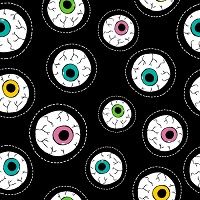Syphilis of the Eye Making a Comeback, CDC Warns
Before antibiotics, people went blind from syphilis. They still could, the US Centers for Disease Control and Prevention warned today.

Before antibiotics, people went blind from syphilis. They still could, the US Centers for Disease Control and Prevention warned today.
Uveitis or other eye problems may be symptomatic of ocular syphilis, a sexually transmitted infection found particularly in people with HIV and men who have sex with men, or both. The infection can also manifest itself in neurological symptoms.
Syphilis is on the rise in the US and the CDC today alerted physicians to be on the lookout for the eye infection.
There were 35,547 syphilis cases reported in eight US states in 2015, up from 29,583 in 2014 according to a report today by Sara Oliver, MD, and colleagues in the CDC’s Morbidity and Mortality Weekly Review.
“Severe outcomes, including blindness, occur in both HIV-positive and HIV-negative patients,” she concluded, “Further investigation is currently underway to identify additional risk factors specific to ocular syphilis.”
The eight states are ones in which the CDC had learned of ocular syphilis clusters.
There were a total of 231 ocular cases, but since the condition is not reportable, there could be more.
The highest numbers of ocular syphilis cases in jurisdictions reporting were in California, Washington, North Carolina, and Florida, while the highest numbers of syphilis cases with or without that complication were in Texas with 8,400, California (7,824), Florida (7,124), and New York City (6,116).
In those states, the CDC said, overall, 0.60% of total syphilis cases were identified as suspected ocular syphilis cases, 0.53% in 2014 and 0.65% in 2015.
The percentage of total syphilis cases with ocular manifestation varied by jurisdiction, ranging from 0.17% to 3.9%. Five jurisdictions described an increase in suspected ocular syphilis cases in 2014 and 2015.
Most patients with suspected ocular syphilis were male (93%), and 249 (69%) of those with information on sex partners were MSM. The mean age of patients was 44 years (range = 17—79 years).
Approximately one half of the cases met surveillance criteria for early syphilis (primary, secondary, and early latent syphilis); stage of syphilis was not associated with any specific symptom,
diagnosis, or extent of eye involvement. Overall, patients with suspected ocular syphilis had high rapid plasma reagin (RPR) titers, with a median titer of 128 (range = 1—16,384). Approximately 22% of patients reported additional symptoms of neurosyphilis, including headache, neck pain, altered mental status, or changes in hearing.
All patients with syphilis should be referred for formal ophthalmology consults and treated for neurosyphilis the CDC recommended.
Related Coverage: